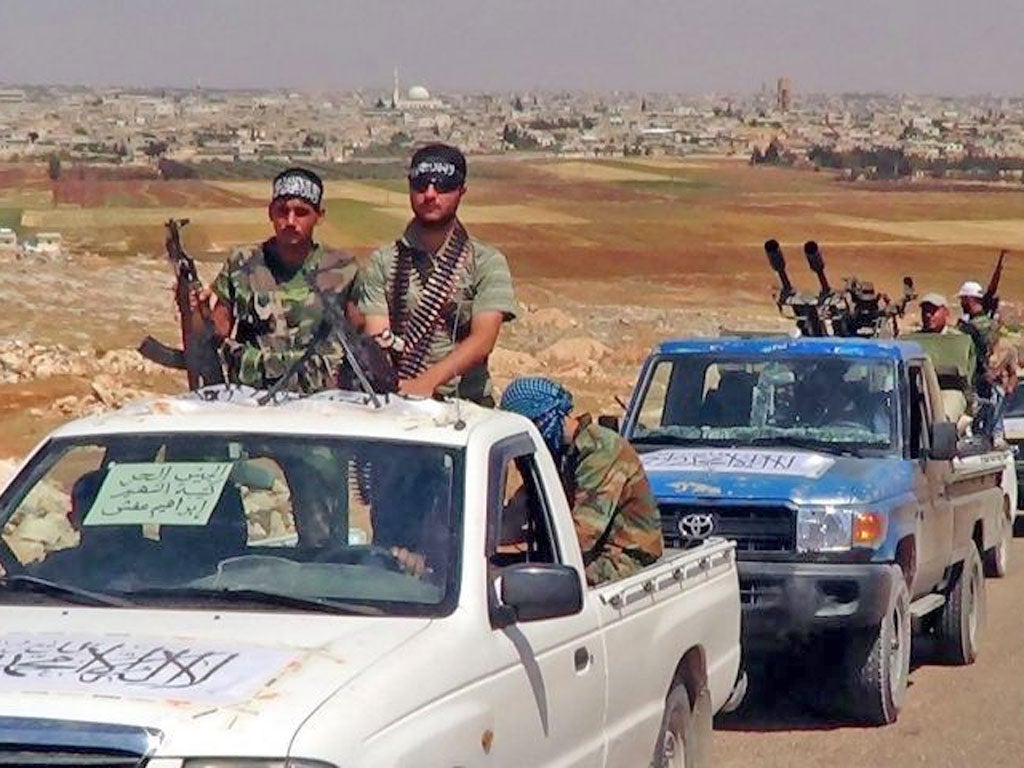Robert Fisk: If Alawites are turning against Assad then his fate is sealed
The Long View: There seems to be a Baathist pattern of destroying Sunni villages on the edge of the Alawite heartland


'Her husband's to Aleppo gone, master o' th' Tiger," Macbeth's First Witch announces, but Shakespeare got his geography a bit wrong. Aleppo is 70 miles from the Mediterranean. It's certainly ancient; Aleppo was mentioned in the cuneiform tablets of Ebla in the third millennium BC and belonged to the Hittites and the Emperor Justinian, its 14th-century citadel walls still lowering today over the revolutionary capital of northern Syria.
And that's the point. While the drama of last week's assault on Bashar al-Assad's regime in Damascus stunned the Arab world, the sudden outbreak of violence in Aleppo this weekend was in one way far more important. For Aleppo is the richest city in Syria – infinitely more so than Damascus – and if the revolution has now touched this centre of wealth, then the tacit agreement between the Alawite-controlled government and the Sunni middle classes must truly be cracking.
As the birthplace of agriculture – the Euphrates is only 70 miles to the east – Aleppo is also the headquarters of the International Centre for Agricultural Research in Dry Areas (Icarda), one of the finest institutions of its kind in the world. It increases food production in Asia and Africa in an area containing a billion people, 50 per cent of whom earn their living from agriculture. Donors include Britain, Canada, the US, Germany, Holland, the World Bank – you name it. And its 500 employees are still operating in Aleppo.
Alas, its principal research station at Tel Hadya, 20 miles from Aleppo, was raided by gunmen who stole vehicles – to use them as "technicals" mounted with machine guns – along with farm machinery and computers. Mercifully, Icarda's gene bank is safe and has been duplicated outside Syria. The Syrian government moved a military checkpoint closer to Icarda's property at Tel Hadya – the Syrian ministry of agriculture was always one of the more progressive offices in Damascus – but what use this will be in the coming days, we shall see.
Across all of Syria, the revolution has spread. Tragically, there now seems to be a Baathist pattern of destroying Sunni villages on the edge of the Alawite heartland, the "frontier" of Alawi-stan in the great agricultural plain of Hama province, below the mountains where the Assad home town of Qardaha stands.
Last Wednesday, for example, two Syrian helicopters attacked the small Sunni town of Haouch, forcing its 7,000 population to run for their lives. For two weeks, Haouch and other small Sunni towns have been shelled; they do indeed contain rebels but there is a growing suspicion – no evidence, mark you – that this is a deliberate policy of the Baath to prepare Syria for partition if Damascus falls. Ominously, this "frontier" of fire matches almost precisely the "State of the Alawites" temporarily created by the post-First World War French mandate which chopped Syria up into mini-nations partly on sectarian lines.
There are equal suspicions, I should add, that the first great Syrian massacre of throat-cutting and executions in the Sunni village of Houla on 25 May might have been a reprisal for the attempted poisoning of Bashar al-Assad's brother-in-law Asef Shawkat, whom the rebels at last cut down in the bombing in Damascus last Wednesday. Others say the attempted poisoning was more recent; but everything that happened – and happens – in Syria is connected.
Take the faint outline of the old French mini-state of the Hauran where Syria's Druze communities now live in growing disharmony with the Assad regime. This month, there was a dangerous outbreak of kidnapping in the region – resolved only after Walid Jumblatt, the Lebanese Druze leader, made a series of phone calls to prominent Druze in Syria. Jumblatt himself has had a friendly-hostile-friendly-hostile-relationship with the Assad family – I may have left out a couple of 'friendlys' and 'hostiles' there – but there is no doubt where he now stands.
Last week, he urged the Druze as well as the Alawites in Syria to join the revolt against the Assad regime. He has even attacked his allies in Moscow, calling Russia's support for Assad "no longer acceptable, morally or politically."
And not without reason does he speak thus. Three Syrian Druze have died in the revolution this month. Majd Zein, a Druze Free Syrian Army member, was killed during an attack on Rastan. Shafiq Shuqayr and Yasser Awwad were executed by the Syrian army when they were discovered to be helping government soldiers to defect in the area of Lajat. Now Jumblatt is calling upon all Alawites to join the rebellion instead of allowing themselves to remain a minority dependent on Assad for their survival. "I say to them that they must say they are Syrians before they are Alawites."
And a final statistic to explain the revolution outside Damascus. Latest figures show that 58 per cent of Syrian's population under 24 years old are unemployed (higher, even, than Egypt), while 48 per cent of the 18-29 year-old age range – a statistic only beaten by Yemen – have no jobs. They do now, of course. Most have joined the Syrian revolt.

Join our commenting forum
Join thought-provoking conversations, follow other Independent readers and see their replies